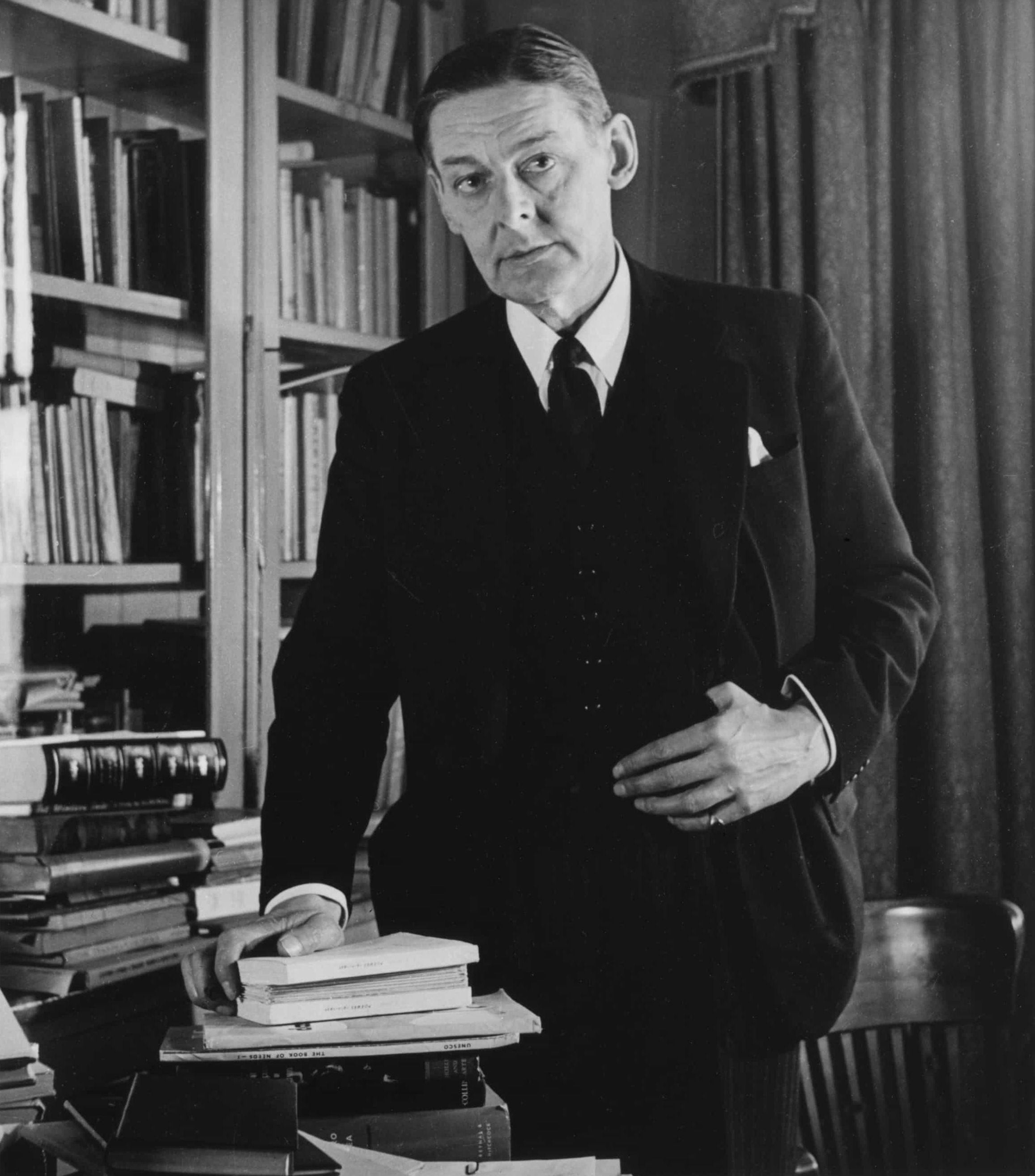Eliot, T. S. (1888-1965), ranks among the most important poets of the 1900’s. In “The Love Song of J. Alfred Prufrock,” The Waste Land, and other poems, he departed radically from the techniques and subject matter of pre-World War I poetry. His poetry, along with his critical works, helped to reshape modern literature. Eliot received the 1948 Nobel Prize in literature.

His life.
Thomas Stearns Eliot was born in St. Louis on Sept. 26, 1888. He studied at Harvard, the Sorbonne in Paris, and Oxford. He settled in England in 1914 where his poems came to the attention of the American poet Ezra Pound. Pound encouraged Eliot, and helped him with his poetry.
Many of Eliot’s views on literature appeared in The Criterion, a literary magazine he edited from 1922 to 1939. Eliot served as a director of a London publishing house from 1925 until his death on Jan. 4, 1965.
In 1927, Eliot became a British subject, declaring himself “Anglo-Catholic in religion, royalist in politics, and classicist in literature.”
His works.
Eliot’s first major poem, “The Love Song of J. Alfred Prufrock” (1917), revealed his original and highly developed style. The poem shows the influence of certain French poets of the 1800’s, but its startling jumps from rhetorical language to cliche, its indirect literary references, and its simultaneous humor and pessimism were quite new in English literature.
“Prufrock” created a small literary stir, but The Waste Land (1922) created an uproar. Some critics called the work a masterpiece, others a hoax. While this long, complex poem includes many obscure literary references, many in other languages, its main direction is clear. It contrasts the spiritual bankruptcy Eliot saw in modern Europe with the values and unity of the past.
Eliot’s “Ash Wednesday” (1930), far different from The Waste Land in tone and mood, is more musical, direct, and traditional, and, in its religious emphasis, tentatively hopeful. Four Quartets, his last major poem, is a deeply religious, often beautiful, meditation on time and timelessness. It includes four sections: “Burnt Norton” (1936), “East Coker” (1940), “The Dry Salvages” (1941), and “Little Gidding” (1942). In “Little Gidding,” he wrote:
Loading the player...We shall not cease from exploration And the end of all our exploring Will be to arrive where we started And know the place for the first time.
Little Gidding by T. S. Eliot
Eliot also wrote several verse dramas. Murder in the Cathedral (1935), his first major play, is based on the death of Thomas Becket. On the surface, The Cocktail Party (1950) appears to be a sophisticated comedy, but it is really a deeply religious and mystical work. Eliot’s other plays include The Family Reunion (1939), The Confidential Clerk (1954), and The Elder Statesman (1958). Eliot’s book of light verse called Old Possum’s Book of Practical Cats (1939) was adapted into the popular musical comedy Cats (1981).
An annotated edition of Eliot’s poetry was published in 2018 in two volumes, The Poems of T. S. Eliot: Collected and Uncollected Poems and The Poems of T. S. Eliot: Practical Cats and Further Verses. His Selected Prose was published in 1975.
See also Love Song of J. Alfred Prufrock, The .
